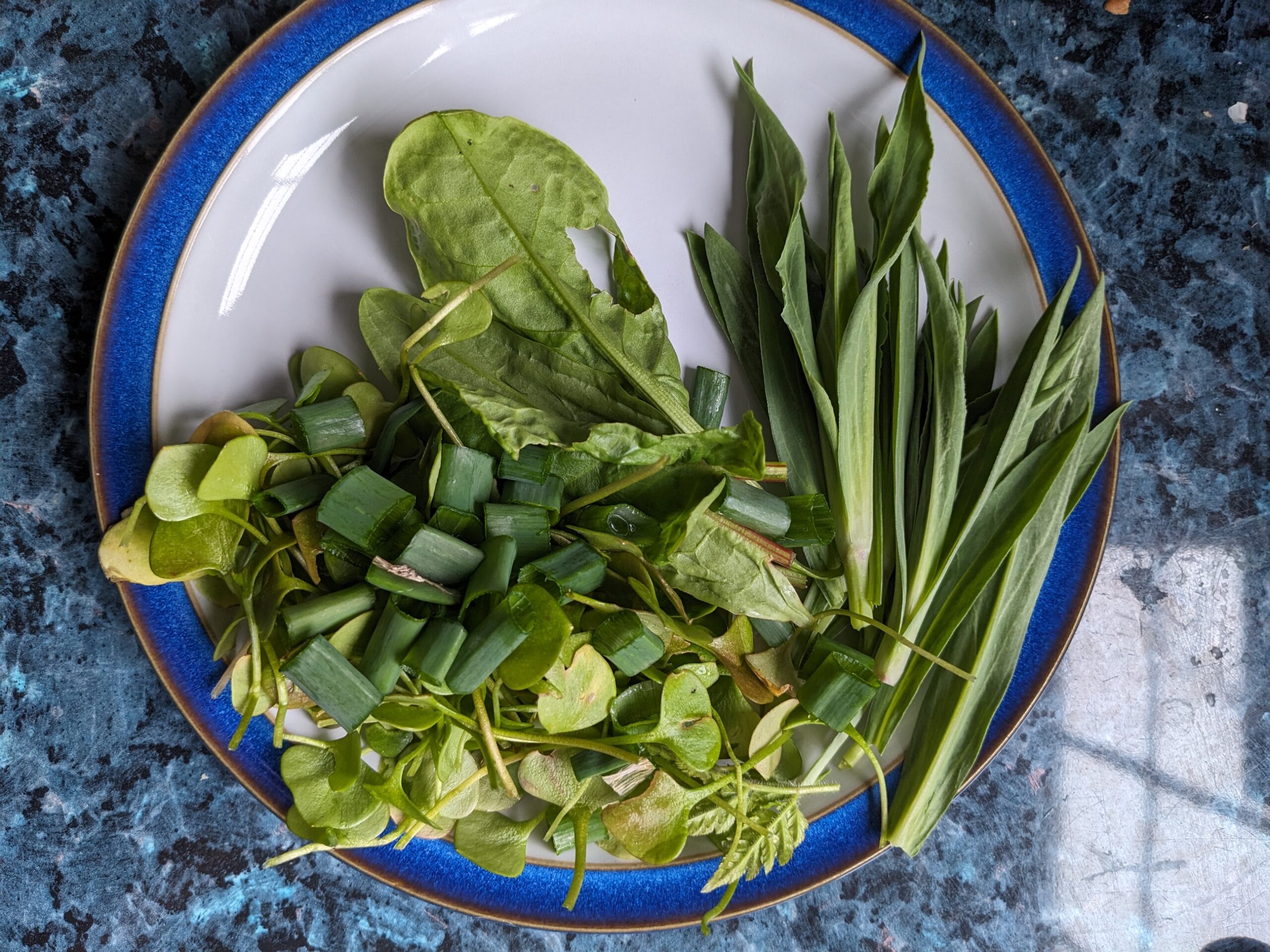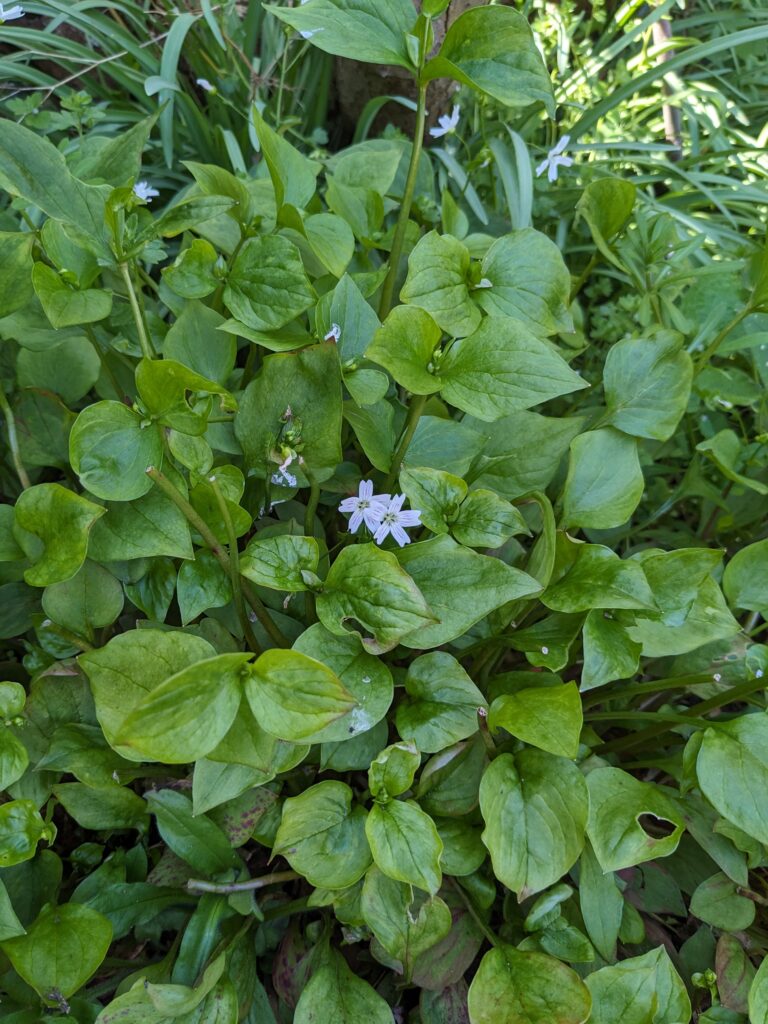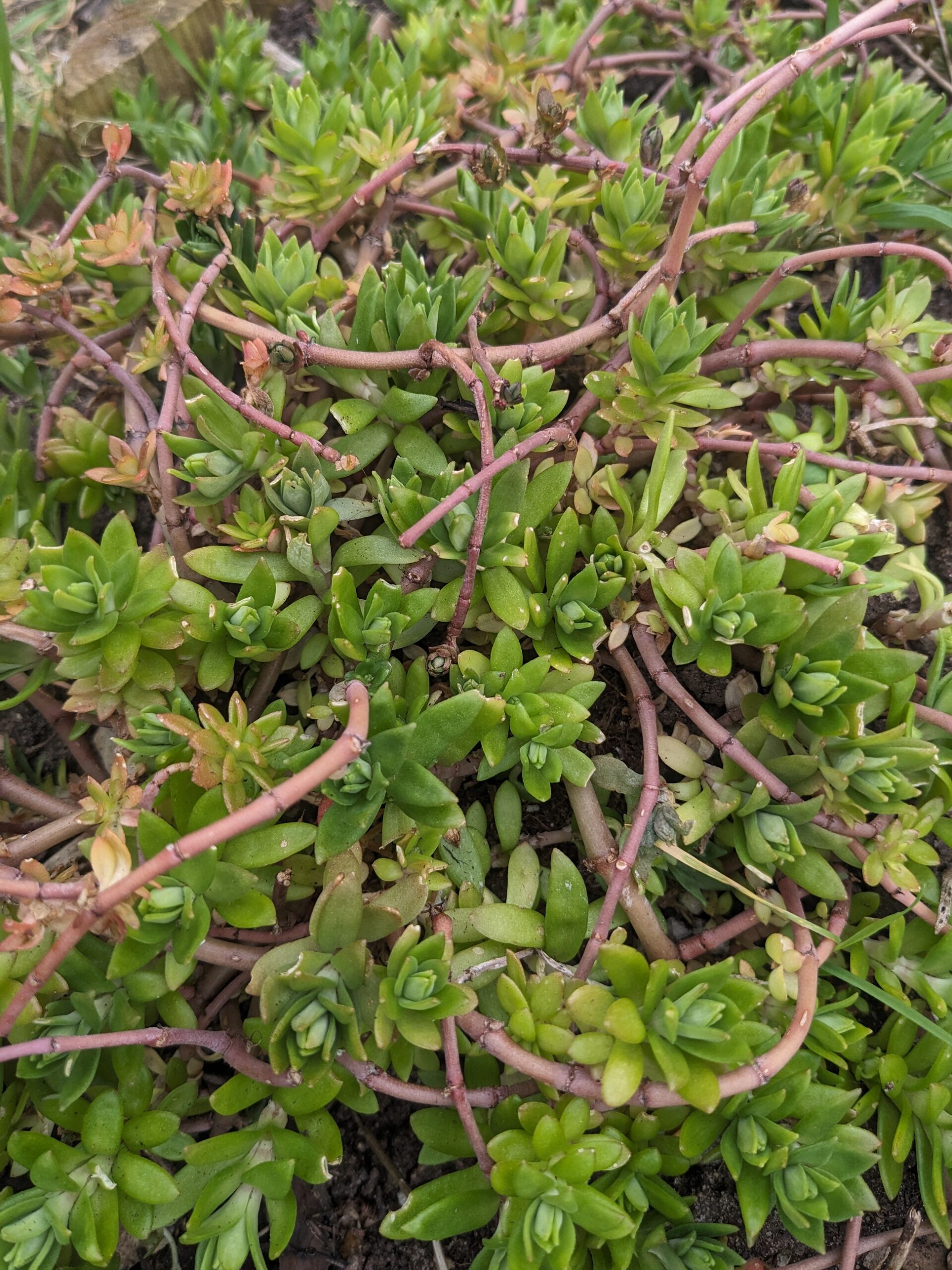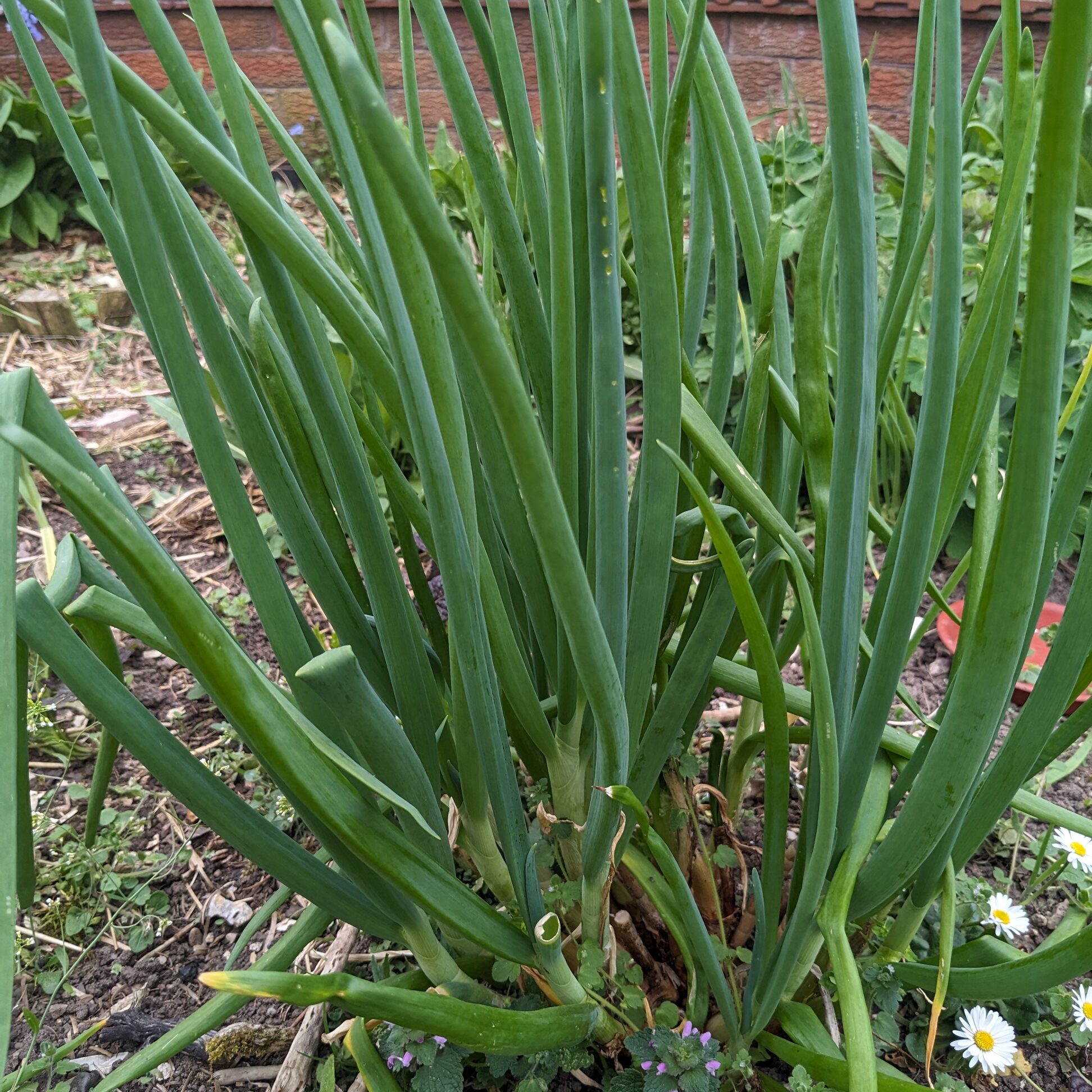
In a forest or woodland, the ground cover plants are the first to come to life, able to grow rapidly and complete their annual cycle before the shrubs and trees above them come into leaf and produce a light blocking canopy.
Perennial vegetables help fill the “hungry gap”
We are coming into the time of year which growers of annual crops describe as the “hungry gap”. Stored supplies of root crops like potatoes, onions and pumpkins are getting used up.Winter greens like kale and Brussels sprouts are coming to an end. Crops planted now won’t be ready until summer.
But in the perennial food forest, there is still plenty to eat. While there may not be bulky, starchy roots to provide lots of carbohydrates, there is a good variety of other things ready to pick now and in the coming months. As someone who eats a low carb diet, this suits me just fine.
Salad crops
John Evelyn, writing in 1699, noted 73 edible “sallet”ingredients which people were eating in his day. So while we may have grown up thinking that lettuce is the main leaf salad ingredient, there are plenty more options than that.
Both my claytonia species are carpeting much of my garden and providing the bulk for my daily salad. I use a cut and come again approach with them. There is also lambs lettuce self seeded around. Sorrel is getting going enough to cope with daily pickings and I note that it has self seeded, with a few new plants popping up. My sculpit is growing strongly too. I have just planted some sculpit seeds that I saved last autumn as I would like more of this crop which keeps giving month after month.


New plantings
I have some new kids on the block which I planted in the autumn. These include reichardia picroides (perennial salad leaf), wall rocket, salad burnet, sedum sarmentosum which are all settling in well. The sea beat and Asturian tree cabbage have been ravaged by pigeons and are now under bird netting. They are growing back.
As the spring progresses, I shall look forwards to fresh new leaves harvested from musk mallow leaves, sedum herbstfrude, small leaved lime and a variety of herbs to add into my salads. Musk mallow, while not having much flavour, is prolific and has pretty flowers for several months of the year. It grows in sun but also in fairly shady spots. A definite must for any garden in my opinion.
I have also planted some annuals such as mizuna and purple mustard leaves to add to these as well as radish. So while I don’t have 73 “sallet” crops yet, I have far more variety than most.
Shoots, Cooking leaves and Alliums
In terms of shoots, I have picked my first asparagus tips this year. But I also pick other shoots such as hosta tips, solomon’s seal and sea kale. I use these in the same way as asparagus. My Caucasian spinach plants are now two years old. As they can live for a hundred years or more, they are still young, but I will probably harvest some leaves from these climbers. I have some perennial kale seedlings which are growing well (Portland Brigg and Nero di Toscana from Alan Carter). The purple tree collard I bought a few years ago has never done well, so I hope that these new varieties may fare better.
My perennial aliums are also coming on well. I am using the green leaves from the walking onions as a spring onion substitute. They are far easier to grow than the annual ones. I always struggled with growing spring onions, but now have huge bunches of these fresh, onion leaves. My Babington leeks are growing bigger each year and I have harvested a few, chopping them just above ground level. They taste lovely and tender perhaps with a garlic undertone. The chopped bases are indeed growing back ready to produce more harvests down the line.
There are also other things to be eaten, if you are feeling adventurous. I have picked and roasted hazel catkins, first boiling them in syrup. These make a crunchy, protein rich topping for yogurt. Stinging nettles are another high protein food that is readily available. When cooked, the leaves lose their sting. Magnolia buds are coming into season too. These can be sliced and fried like onions. Different trees have different flavours. Mine have a ginger flavour.
All in all, I can say I do not have a “hungry gap” in my garden.

